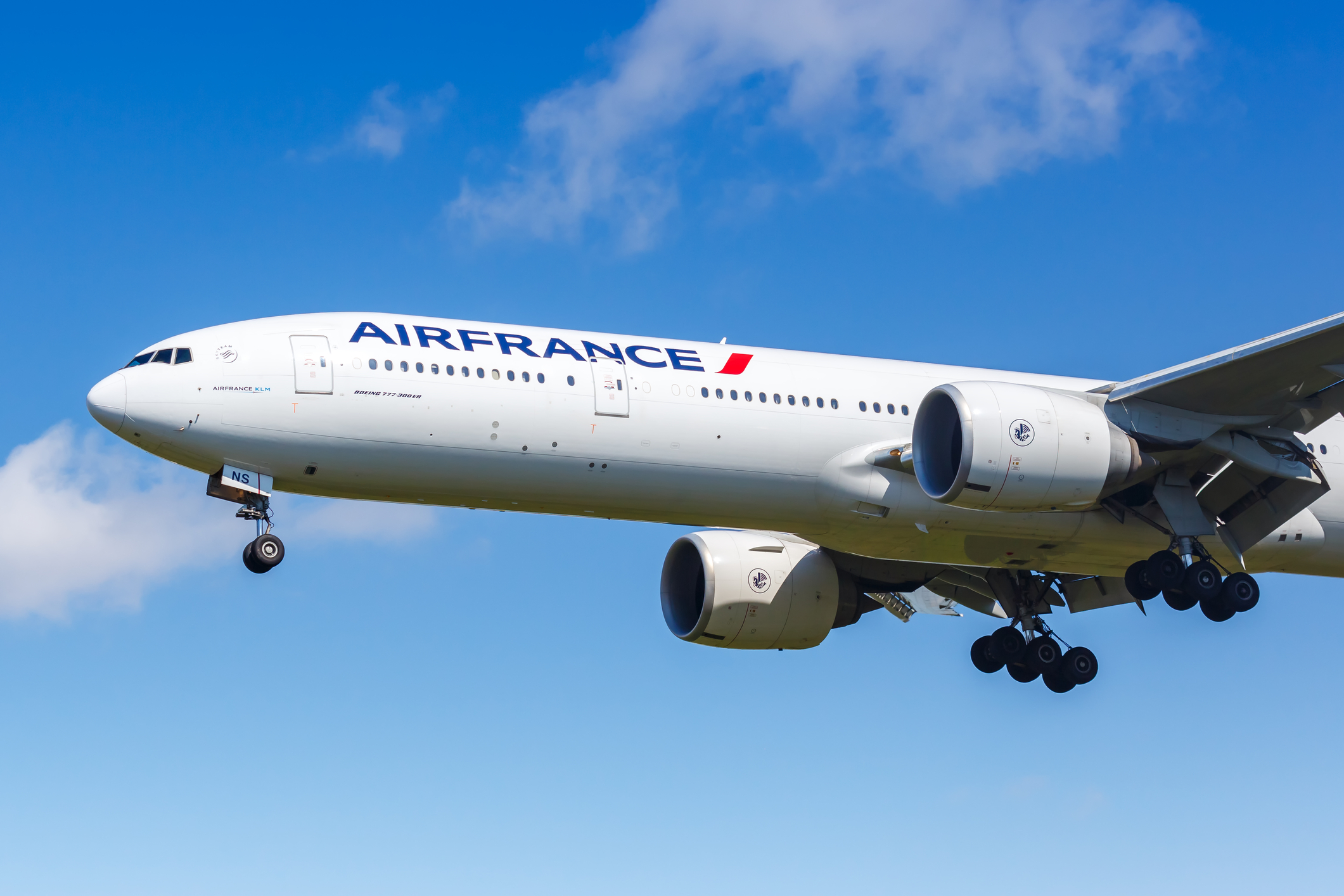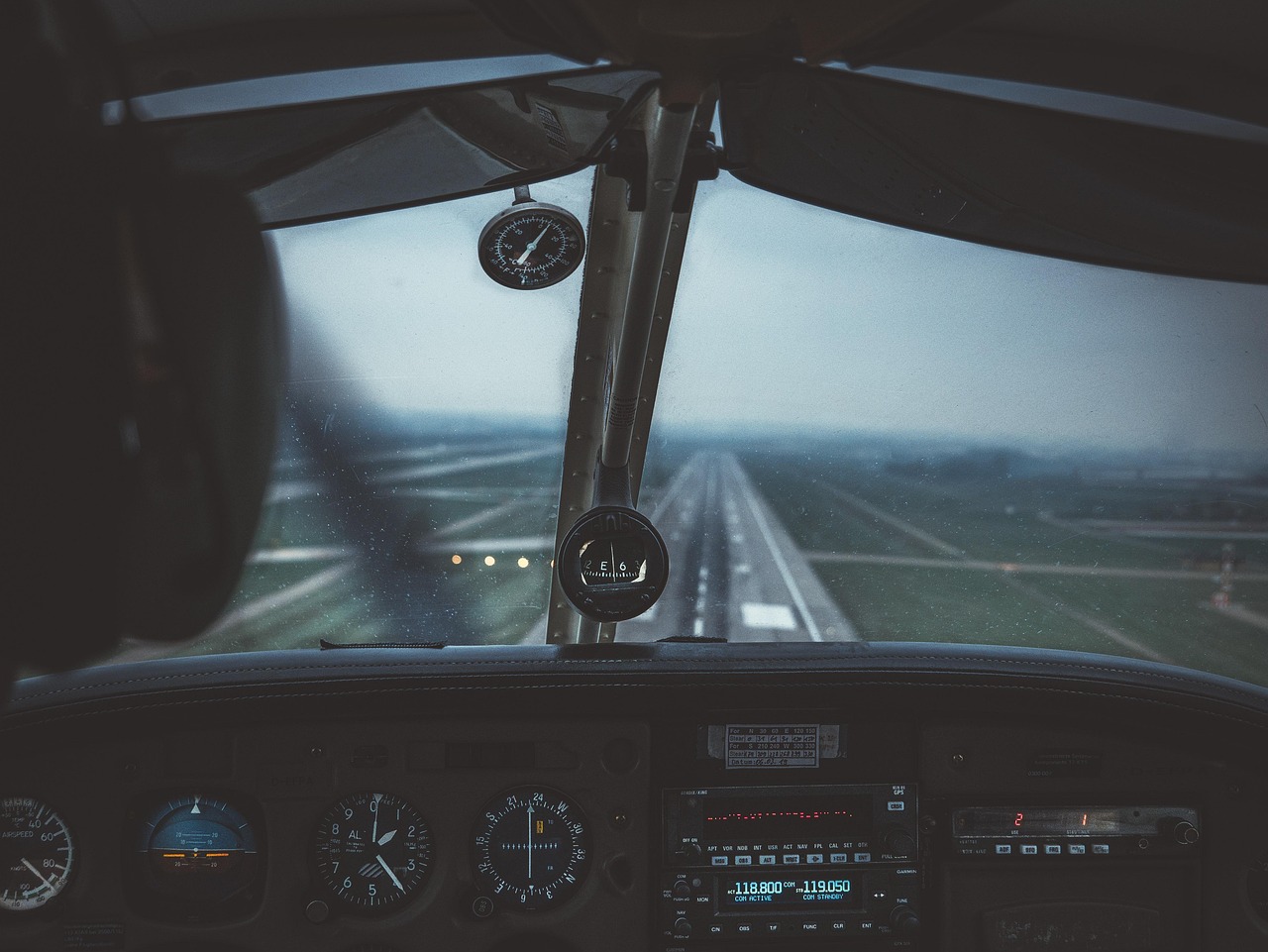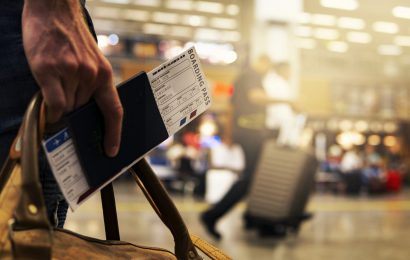If there’s one thing travel teaches us, it’s that the journey doesn’t always go as planned. But for the passengers aboard Air France Flight AF500, heading from Paris to Lima, the journey didn’t just take an unexpected turn – it took a literal U-turn, thousands of miles over the Atlantic, because of a problem no traveler ever wants to hear announced over the speakers:
“Ladies and gentlemen, we are experiencing a serious toilet malfunction.”
(note: I do not know if this was actually said, but it is funny, in hindsight, to think of this unusual announcement)
Hours into the trip, the long-haul Boeing 777-300ER had to abandon its route and return to Paris due to a flooding issue involving the lavatories – an incident now immortalized in travel circles as the “overnight toilet odyssey.”

ID 296930081 | Airplane ©Boarding1now | Dreamstime.com
The story has everything: aviation drama, the surreal feeling of spending a night in the air only to end up back at your starting point, and a reminder that sometimes the smallest systems on a giant aircraft can cause the biggest dilemmas. And yes – it is absolutely real.
This article unpacks what happened on AF500, why it mattered, what it tells us about aviation (and toilets at 35,000 feet), and how this incident compares with similar strange airline turnbacks from the last decade.
Grab a cup of tea – I’m telling you, this story deserves a cosy read.
What Happened on Air France Flight AF500?
On the night of November 26, 2025, Air France Flight AF500, a Boeing 777-300ER, lifted off from Paris Charles de Gaulle Airport for what was meant to be a routine overnight journey to Lima. For the first couple of hours, the flight unfolded normally.
Then the crew noticed irregularities in the rear lavatory system – first subtle, then unmistakably serious as water began leaking and seeping into the back section of the cabin. With multiple toilets becoming unusable and part of the area compromised, it was clear that something in the plumbing system had failed in a way that couldn’t be contained at cruising altitude.
As the situation worsened, the crew made the difficult but necessary call. Long-haul safety rules require a minimum number of operational restrooms, and with flooding affecting both comfort and sanitation, the aircraft could not continue across the Atlantic.
The pilots declared an emergency, issued the “squawk 7700” signal, and turned the jet back toward Paris. What began as a quiet westbound journey became a slow, carefully managed return over the dark ocean, with the crew coordinating fuel burn, air-traffic directives, and the safest approach path back to France.
By the time the aircraft finally touched down at Charles de Gaulle, passengers had spent most of the night in the air only to arrive exactly where they had started – a full-circle odyssey with no destination at all.
It almost sounds whimsical in hindsight, but this sort of incident is anything but trivial when you’re thousands of miles from land. On long-haul flights, lavatories are not minor amenities; they’re essential infrastructure. When that system fails, the safest place to be is back on the ground, even if it means watching the sun rise over the same runway you left hours earlier.
Why a Toilet Problem Can Cause a Long-Haul Flight to Turn Back
If you’ve ever wondered how a lavatory issue can bring down an entire intercontinental itinerary, here’s the short version:
A long-haul flight must have a minimum number of functioning lavatories to comply with safety and health regulations.
A flooded cabin section is also a hazard for:
- Electrical components beneath the floor
- Passenger mobility
- Sanitation and biohazard concerns
- Odor (yes, that alone can qualify as a medical/sanitary emergency)
When multiple toilets fail – or water/fluids affect the cabin – the flight is no longer safe to continue.
In aviation, small failures in complex systems can cascade into larger issues. As Leonardo da Vinci once said:
“Details make perfection, and perfection is not a detail.”
A $300 million aircraft can be grounded because of a $30 valve or a small pipe. That’s the beauty and fragility of engineering at scale.
In AF500’s case, the crew’s decision to return to Paris rather than divert to the Azores or another Atlantic airport suggests the airline assessed Paris as the safest and most efficient option.
Airplane lavatory systems are far more complex than passengers usually realize. Modern long-haul jets rely on vacuum-flush technology, plumbing lines that run beneath cabin floors, and centralized waste tanks that must remain sealed and pressurized throughout the flight.
A single blockage or leak can disrupt the pressure balance, affect multiple toilets at once, or even pose a risk to electrical wiring located below the cabin. That’s why regulators treat lavatory failures as true operational hazards – not inconveniences – especially on routes that cross remote ocean regions where emergency landings aren’t possible.
Passengers’ Overnight “Toilet Odyssey”
ID 40366261 | Airplane Boeing Lavatory ©Rafael Ben Ari | Dreamstime.com
For the passengers who boarded the plane expecting to wake up to Peruvian sunshine, the experience was surreal.
Hours in the air.
Lights dimmed.
An ocean below.
And then: a U-turn.
When the cabin announcement confirmed they’d be returning to Paris, some likely thought they were dreaming. Others probably worried about missed connections, work obligations, or ongoing travel plans.
But sometimes travel teaches us patience – and perspective.
As Mark Twain wrote:
“Travel is fatal to prejudice, bigotry, and narrow-mindedness.”
And, one might add… it’s also fatal to perfectly neat itineraries.
Air France has not released a public statement regarding compensation or rebooking, but standard EU regulations (EC 261/2004) generally apply when a flight is disrupted – though technical malfunctions often fall into gray zones.
Still, passengers reportedly spent the night effectively circling the Atlantic, only to land in the same place they left. If you’ve ever experienced a travel day so long that you questioned the fabric of time, they would understand.
I would add something here, though.
I know that delayed or cancelled flights – or returns such as this one – are awful. They mess up plans, trips, vacations, etc. BUT, I always say: safety is the main priority. Or should be. Always.
It is always better to arrive later at a destination than to never arrive at all!
It’s worth remembering that flight turnbacks, while frustrating, are a normal part of modern aviation safety. Airlines train for them, pilots practice them, and air-traffic controllers coordinate them every day somewhere in the world.
A return to the departure airport doesn’t mean the aircraft was in danger – it means the crew chose the safest option early. Most passengers will never experience an emergency return, but when they do, it’s a sign that safety procedures are working exactly as intended.
How Rare Is This Kind of Turnback?
Stories like AF500 tend to capture global attention not because they are common, but because they highlight how unpredictable travel can be. Aviation enthusiasts love digging into unusual incidents, and everyday travelers find them oddly relatable – after all, who hasn’t been stuck on a plane, wondering what happens if something essential suddenly stops working?
Believe it or not, toilet-related emergencies are not common, but they do happen – and when they do, they’re memorable. Let’s see some examples:
1. United Airlines flight returns to Paris due to bathroom malfunction (2025)
In September 2025, a United Airlines flight from Paris to Washington, DC had to return to Charles de Gaulle Airport after only a few hours due to a toilet malfunction that prevented passengers from using the lavatories.
Bathrooms on long-haul flights are so essential that even one malfunction can cause a major disruption – especially on aircraft with older plumbing systems.
2. A Toronto to Delhi Air India flight was diverted after passengers clogged almost all toilets (2025)
A Toronto to Delhi Air India flight was diverted to Chicago after eight of the 12 toilets became unserviceable.
The flight returned to Chicago due to nighttime restrictions at European airports.
3. British Airways flight forced to land due to “unbearable smell” (2015)
In March 2015, British Airways Flight BA105, a service intended for Dubai, was forced to execute a rare air-to-air turnaround shortly after departing London Heathrow. The aircraft did not suffer a technical malfunction; rather, the emergency landing was necessitated by an overpowering odor emanating from one of the passenger lavatories.
The smell, which reportedly began to seep into the cabin, was so severe that it compromised the air quality and rendered the conditions for continued travel unacceptable.
The pilot, seeking to reassure the passengers that the diversion was not due to an aircraft safety issue, made a direct announcement. The pilot explained that the problem was a significant build-up of “liquid faecal excrement” in the toilet, an issue the crew was unable to resolve in-flight. The flight was diverted back to Heathrow, marking one of the most unusual and widely reported reasons for an emergency landing in commercial aviation history.
The quote alone belongs in aviation folklore.
4. Delta flight diverted after malfunctioning lavatories led to a messy incident (2017)
In December 2017, a Delta Airlines flight traveling from New York (JFK) to Seattle was forced to make an unscheduled landing in Billings, Montana, after all of the plane’s lavatories stopped functioning, causing a “sanitation emergency.”
The pilot diverted the Boeing 757 so passengers could disembark and use the airport restrooms, leading to a delay of about three and a half hours before the toilets were serviced and the flight continued to its destination.
What These Incidents Tell Us About Air Travel
Aviation is one of the most meticulously regulated industries on the planet. Every system is engineered with redundancy – except lavatories.
There is simply no backup toilet system.
No emergency portable lavatories.
No contingency plan for a major pipe leak mid-flight.
When the toilets fail, the flight often does too.
And yet, strange as these stories are, they’re a reminder that people – and human systems – are imperfect. A reminder of what John Steinbeck once wrote:
“A journey is like marriage. The certain way to be wrong is to think you control it.”
In other words: travel teaches us humility.
Even when that lesson is delivered through a plumbing emergency.
So… What Should Travelers Take Away From This?
If there’s a lesson in the AF500 story, it’s this:
Long-haul flights depend on dozens of small systems that we never notice until one breaks.
We talk endlessly about engines, turbulence, storms, and emergency landings… but the humble lavatory system might just be the unsung hero of intercontinental travel.
And there’s something strangely beautiful about that.
As poet Mary Oliver wrote:
“Attention is the beginning of devotion.”
Maybe next time we board a flight, we’ll pay a little more attention to the little things – the soft hum of the air systems, the comforting click of the lavatory lock, the simple miracle of water pressure above the clouds.
Because when those little things fail… well, you get a story like this one.
Travelers often wonder what actually happens behind the scenes during a turnback or diversion. In most cases, the crew consults checklists, speaks directly with maintenance teams on the ground, and evaluates whether the aircraft can legally and safely continue.
If essential systems – like lavatories, hydraulics, or pressurization – aren’t functioning properly, regulations require the flight to divert or return. Compensation depends on the cause and the region’s laws, but safety decisions always take priority over schedules, cargo, or connections.
As A Conclusion
The Air France AF500 “toilet odyssey” wasn’t dangerous. It wasn’t dramatic in the Hollywood sense. But it was real, human, and quietly unforgettable – the kind of story that spreads because everyone who has ever flown a long-haul flight can imagine being there.
And maybe that’s why these stories matter.
They remind us that travel is unpredictable, alive, full of surprises – some glamorous, some absurd, all part of the adventure.
And as any seasoned traveler knows:
Sometimes the best stories come from the journeys that don’t go as planned.







